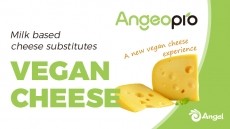Chr. Hansen bids to ‘change winemaking landscape’ with new cultures
Laurent Hubert, marketing director, wine cultures at Chr. Hansen told FoodNavigator.com that its new Viniflora Freasy CH16 range will secure speed, and consistency in production, alongside the absence of downgrades and off-flavours by other microorganisms, while preventing the development of biogenic amines such as histamine during malolactic fermentation for smaller wine producers.
Nearly 10% of the global wine production of 2.30 billion liters is today inoculated with malolactic cultures, said the Danish supplier.
Malolactic fermentation, a process where lactic acid bacteria convert sharp-tasting malic acid into the softer-tasting lactic acid, is used by wine makers to cut the acid in red wines, and some white wines, particularly those aged in oak, by organic rather than chemical means.
A wine high in malic acid is naturally more acidic, consequently, the greater the reduction the smoother the wine.
Previously the FroZen Viniflora technology, said Hubert, was only available to large scale wineries as the cultures are delivered at -50C and stored at -50C. And, generally, only the bigger producers would have the necessary scale to warrant purchasing a -50C freezer, he explained.
“By developing a product delivered at -50C and storable at -18C we are opening this FroZen technology to all wineries and winemakers,” added Hubert.
The new range of cultures is suitable for reds such as Cabernet-Sauvignon, Merlot, Shiraz, Tempranillo, Sangiovese, and Primitivo.
Hubert said the Freasy cultures are set to shave off energy-consuming time during the malolactic fermentation process for high pH, high alcohol red wines.
“With CH16, malolactic fermentation can be managed in 10 to 20 days depending on the temperature. This is a huge difference compare to a 'spontaneous malolactic fermentation' that can take 2 to 3 months,” he added.
The range was tested over a two year period in South Africa and France with the trials, said Hubert, showing that a standard -18°C freezer is good enough to keep all the good features of these frozen cultures which is a huge advantage to small and medium sized wineries.
“Performances where similar to the product stored at -50C; we only had a difference after 12 weeks. This gives enough time to winemakers to store the product in their freezer until its day of use,” said the Chr. Hansen wine specialist.
Currently targeting small scale winemakers in South Africa and Australia, Chr. Hansen said the cultures will be available for the European market around August this year.





























